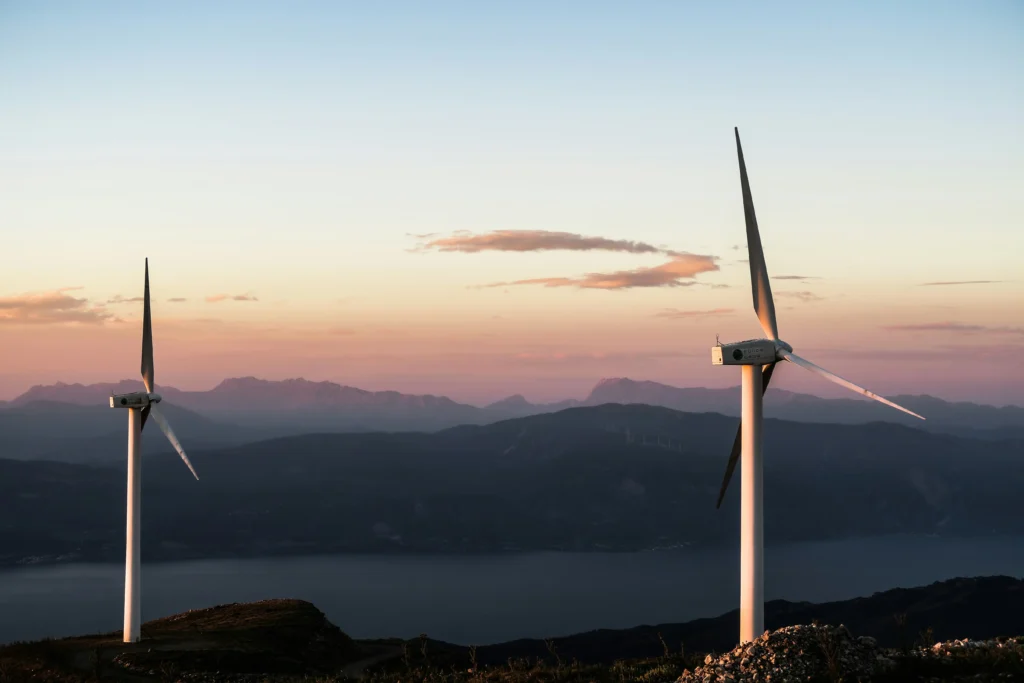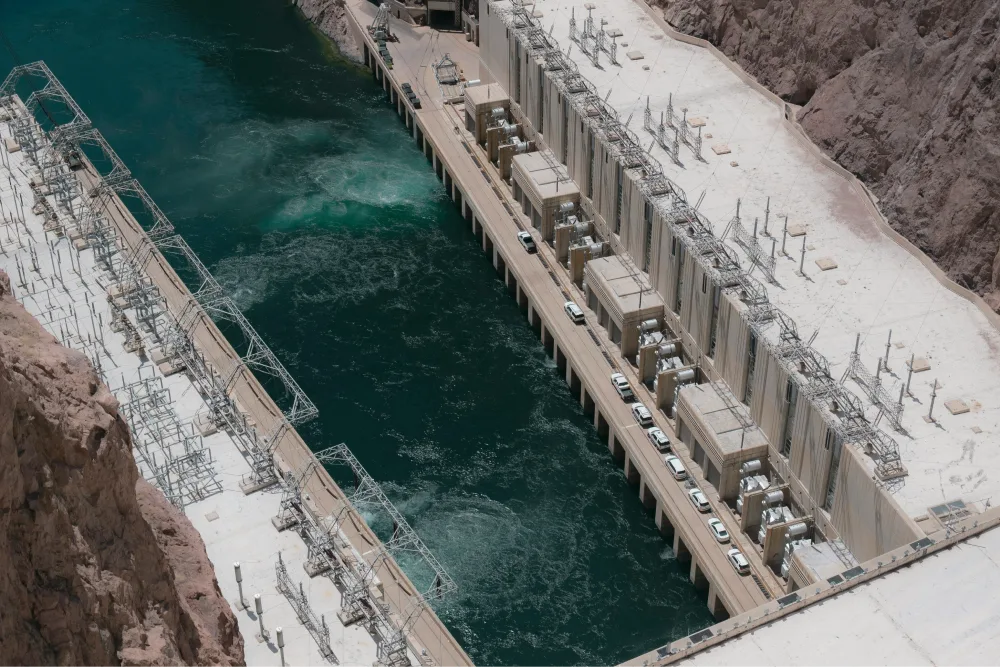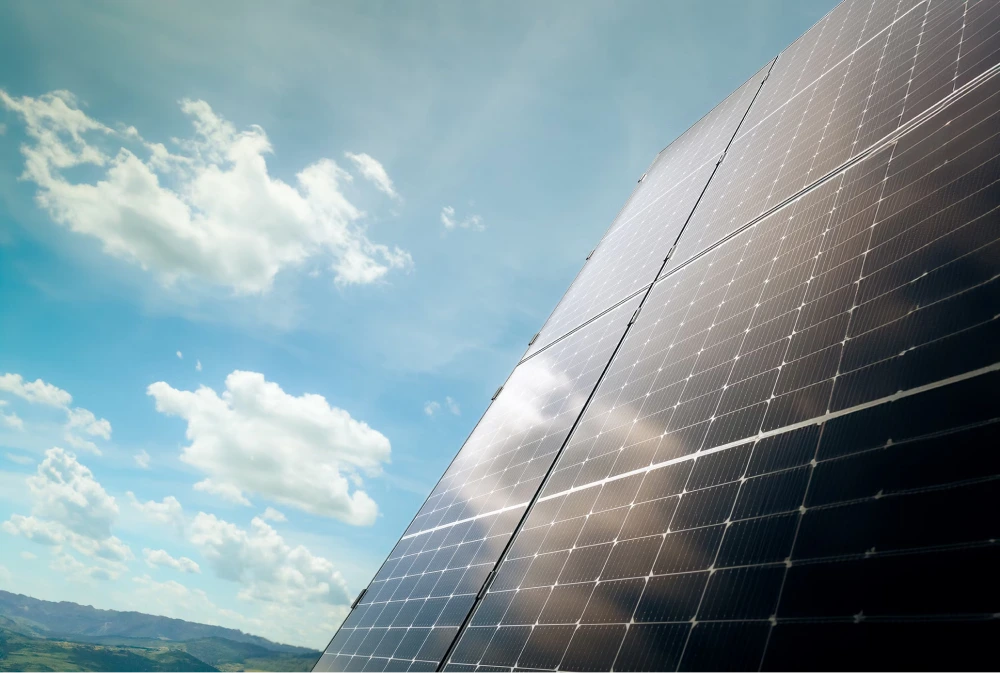
Pros and Cons of Hydroelectric Energy
5 minute read • Last update October 2024

In this article
What are the pros and cons of hydroelectric energy?
| Pros of hydropower | Cons of hydropower |
|---|---|
| Renewable and sustainable | Impact on local environments by changing water flow |
| Low greenhouse gas emissions | High initial costs |
| Reliable and consistent power generation | Dependence on flow and availability of water |
| Energy storage capabilities | Risk of catastrophic failure due to natural disaster |
| Long lifespan | Limited suitable locations |
| Cost-effective operation | Impact on water temperatures in ecosystems |
| Energy independence from fossil fuels | Seasonal variability |
| Flexibility in grid stabilization | Impact on groundwater levels |
| Job creation | Downstream flood risks during natural disasters |
| Hydroelectric dams can serve multiple purposes | Limited technological advancement opportunities |
| High energy efficiency | Aesthetics |
| No air pollution | Geopolitical tensions |
| Drought and flood mitigation | Build up of sediment and silt |
Pros of hydroelectric power
Hydroelectric power is a reliable form of renewable energy with many benefits, making it an attractive way to generate electricity.
1. Renewable and sustainable
Hydropower relies on the natural movement of water to generate electricity, which makes it a renewable and sustainable source of energy that won’t deplete over time as long as that flow of water is maintained.
2. Low greenhouse gas emissions
Hydroelectric plants, tidal power, and wave power systems emit very low amounts of greenhouse gases compared to fossil fuels like oil and coal, reducing the environmental impact related to climate change.
3. Reliable and consistent power generation
Unlike wind and solar, hydropower can provide more consistent and reliable electricity generation. Wind requires the wind to blow, and solar requires daylight. Hydroelectric dams would only be unable to generate power in the extreme case of a river or reservoir behind a dam drying up completely.
4. Energy storage capabilities
Some hydroelectric dams can store excess energy using pumped-storage systems. They can pump water to a higher elevation during low-demand periods and release that water later during high demand.
5. Long lifespans
Hydroelectric dams have long lifespans compared to solar panels, wind turbines, and fossil fuel plants. They can last between 50-100 years or more, making them a solid long-term investment for energy infrastructure. For example, the Hoover Dam was constructed in the 1930s and has a generation capacity of 2,000 megawatts (or 4.5 billion kWh annually).
6. Cost-effective operation
In comparison to fossil fuel plants, hydroelectric dams and other hydropower systems generally have lower operational and maintenance costs. There is no need to purchase fuel because they rely on the natural flow of water.
7. Energy independence from fossil fuels
Hydropower contributes to energy independence by reducing the need to import fossil fuels and by providing a local, sustainable, and self-sufficient source of electricity.
8. Flexibility in grid stabilization
Hydroelectric dams are a great source of power to complement the intermittency and variability of solar and wind. By adjusting the amount of water that is allowed to flow through the dam, operators can scale up or down the amount of energy produced.
9. Job creation
Construction, operation, and maintenance of new and existing hydropower facilities create jobs, which is especially beneficial to rural and undeveloped areas where these types of utility-scale projects take place. According to a 2022 report published by the International Renewable Energy Agency, nearly 2.5 million people around the globe work in the hydropower industry.
10. Dams serve multiple purposes
Dams are not only used for generating power. They can also be used to help provide drinking water, water for irrigation of crops, and space for recreational activities. By keeping the population hydrated, fed, and entertained, they add a lot of value to society.
11. High energy efficiency
One of the most energy-efficient power sources, hydropower plants convert up to 90% or more of the energy from flowing water into electricity. This is much higher than that of fossil fuel plants. Coal plants can achieve around 32% efficiency, natural gas plants can reach up to 60% if they are combined cycle, and oil plants land at about 40% efficiency.
12. No air pollution
According to the U.S. Energy Information Association, hydropower plants do not directly emit air pollution. Because hydropower systems do not burn fossil fuels, they help reduce the amount of air pollution produced. This contributes to improved air quality and overall public health.
13. Drought and flood mitigation
In case of severe drought, dams can help maintain water supply when demand is high. Additionally, when there is too much water, dams can be opened to help control water flow and prevent damage to structures in the area.
Cons of hydroelectric power
As with all methods of electricity generation, hydroelectric power is not without disadvantages.
1. Impact on local environments by changing water flow
The construction of a dam or reservoir can significantly alter the makeup of a local ecosystem, which can affect the animals that live there both up and downstream from the dam.
2. High initial costs
Building a hydroelectric dam requires significant financial investment. Though the operating costs are low, in some cases, the upfront costs can be a barrier. Additionally, there is the cost of transmitting and distributing the power. If the dam is not easily connected to existing grid infrastructure, the cost to build new power lines can be prohibitive.
3. Dependence on the availability and flow of water
Because hydropower relies on the flow of water to generate electricity, intense droughts can reduce the reliability of a hydroelectric dam’s generation capacity. From another perspective, if a community that relies on a reservoir for drinking water is going through a drought and needs to conserve water, this can create conflict with the dam’s mission to generate electricity.
4. Risk of catastrophic failure due to natural disaster
In the case of a natural disaster such as an earthquake measured high on the Richter Scale, a dam could collapse and the fallout from the dam’s failure could be catastrophic. Other causes of total failure include poor construction or design, severe rainfall events, landslides, human operator error, fire, and explosions.
5. Limited suitable locations
There are several factors that determine whether a location is suitable for a hydroelectric dam. Of course, there must be a water source that is unlikely to dry up. Areas that are prone to severe earthquakes may not be suitable. Additionally, suppose the proposed location is very remote and would require significant investment in infrastructure to connect it to the grid. In that case, that cost may be too high to justify that spot.
6. Impact on water temperatures in ecosystems
Water released from a deep reservoir behind a dam can be colder than the natural temperature of the river or lake downstream. Aquatic life is very sensitive to water temperature, which can be harmful and disruptive.
7. Seasonal variability
In some areas, water flow is highly dependent on seasonal rainfall or snowmelt. This can lead to fluctuations in power generation capacity and reduce the reliability of the plant.
8. Impact on groundwater levels
The construction of a dam may lead to a large reservoir of water that can affect the water table of the nearby area. When groundwater is impacted, agriculture, local ecosystems, and water wells can also experience negative change as a result.
9. Downstream flood risks during natural disasters
Hydroelectric dams require close regulation of river flow. If an operator suddenly releases a large volume of water at once, such as during an extreme weather event, the areas downstream are at risk of flooding.
10. Limited technological advancement opportunities
The basic technology behind large-scale hydroelectric plants has matured and has not seen much advancement in comparison to wind or solar. This may limit future efficiency gains. However, many hydropower plants are already capable of 90% efficiency which outpaces wind and solar significantly.
11. Aesthetics
Large hydroelectric dams can drastically change the visual landscape of an area in ways that locals or tourists find undesirable. Changes in water flow can also impact recreational activities such as boating or fishing. Alternatively, some dams, like the Hoover Dam, become tourist attractions.
12. Geopolitical tensions
It’s possible that the ideal location for a new hydroelectric plant could span international borders, and within the US, between states. When this occurs, construction and management can become very complicated. There may be conflict over water rights and access or the energy produced by the dam.
13. Buildup of sediment and silt
Over long periods, reservoirs behind dams can accumulate sediment. This may reduce their storage capacity and limit a plant’s efficiency. Sedimentation also impacts downstream ecosystems by altering the transportation of nutrients and minerals that are now blocked by the dam.
Written by Graham Lumley
Graham Lumley, Digital Marketing Manager at BKV Energy, leads digital and traditional marketing strategies, focusing on educating Texans about the state's deregulated energy market. With over 8 years of marketing experience, he creates content to help consumers understand and save on their energy bills, bringing a fresh and dynamic approach to the industry.
Related articles

Is Solar Energy Renewable?
3 minute readIs solar power a renewable energy source? Yes, solar energy is considered a renewable energy source because it has an
Get $50 off your electric bill!
Use code BKVEJOINUS50
Enter your zip code to shop BKV Energy's affordable, fixed-rate Texas electricity plans. Use the promo code for $50 off your electric bill.
